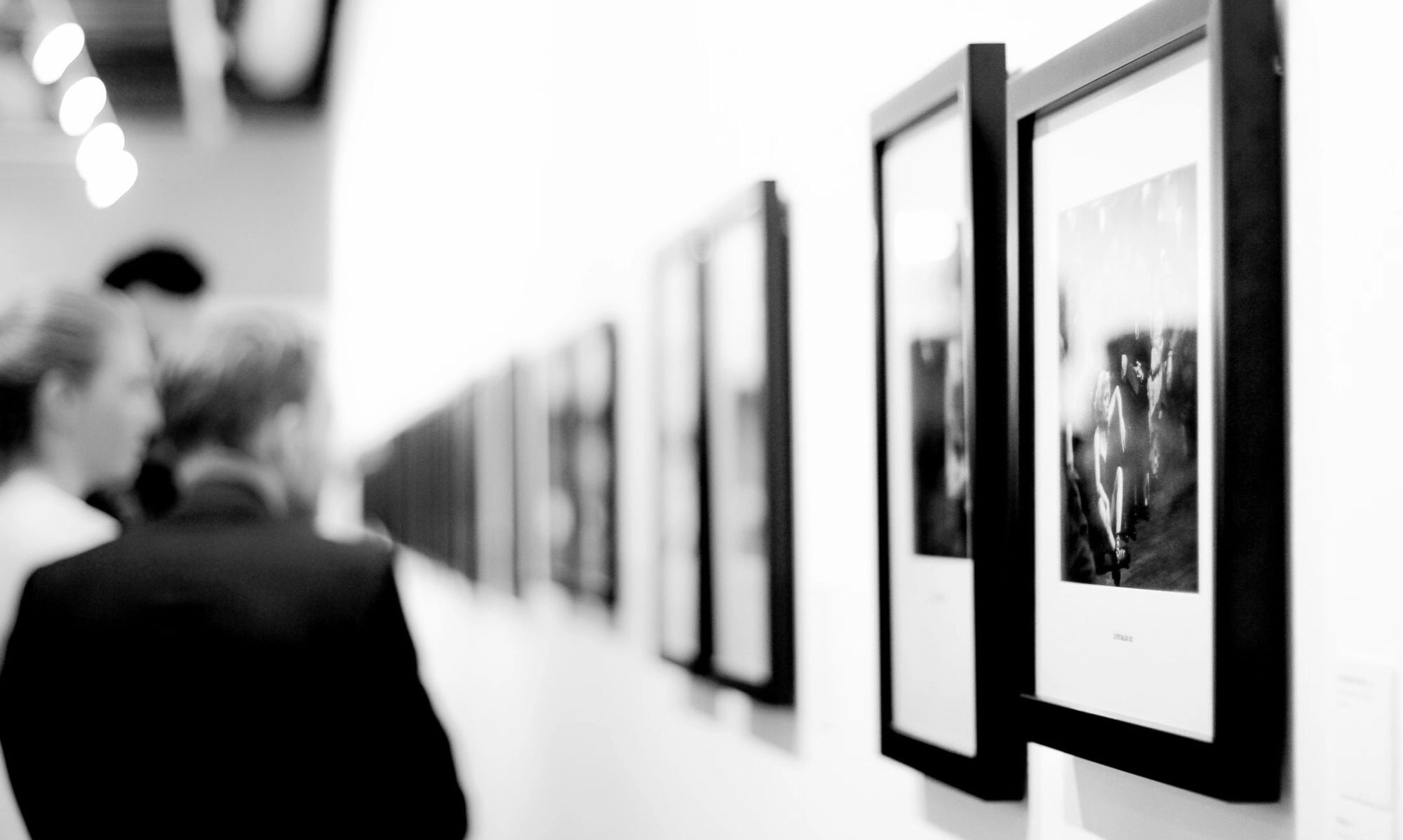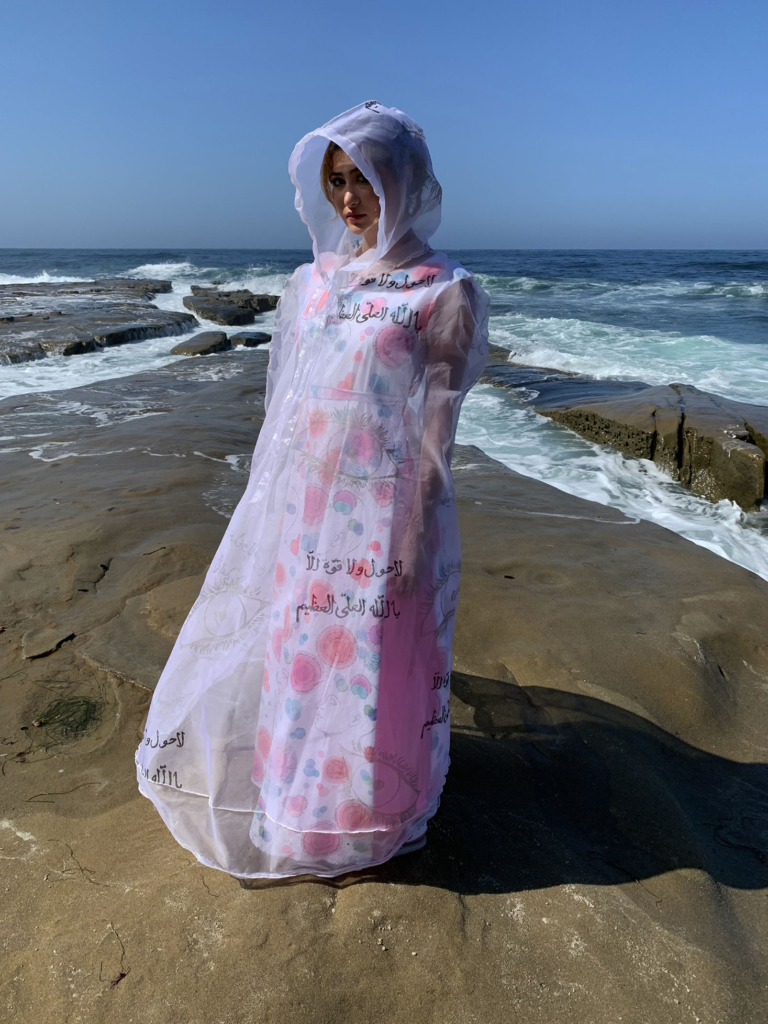To Hear and Be Heard
Nazanin Hedayat Munroe
Nazanin Hedayat Munroe is an artist, designer and historian specializing in textiles and costume. Dr. Hedayat Munroe received her Ph.D. from University of Bern, Switzerland and M.A. from San Jose State University in art history, specializing in historic textiles from the Early Modern Persianate World. Dr. Hedayat Munroe is currently Director of Textile Technology and a tenure-track Assistant Professor of Business & Technology of Fashion at CUNY – NYC College of Technology, where she lectures on textiles, historic dress, and contemporary issues in the fashion industry. From 2011—2016 she worked at The Metropolitan Museum as a textile specialist, publishing several articles and teaching courses at the museum in her area of expertise.
A nationally acclaimed textile artist and NEA grant recipient, her installations and research focus on expressions of cultural identity expressed through clothing, ranging from complex woven designs to digitally printed and smart textiles. She received her M.F.A. from Cranbrook Academy of Art and B.F.A. from Savannah College of Art and Design in textile design and fiber art. She has exhibited her garments and textile-based installations at several museums including the M.H. De Young Memorial Museum, The Metropolitan Museum of Art, Cranbrook Art Museum, San Jose Museum of Art, and The San Jose Museum of Quilts and Textiles.
An Interview with Nazanin Hedayat Munroe
MKM: Why did you pursue art? Were you always creative?
NHM: I was always creative; from the age of about six, I spent many hours writing stories about characters who traveled back in time. Then I would draw and paint their elaborate wardrobes by looking at history books. I started making clothes around this time too, I had a little miniature sewing machine.
MKM: You are an artist and scholar – Can you tell us about the interchange between your fine art practice and your academic, art historical work?
NHM: In retrospect, it makes sense that I became a textile and garment designer who also studied art history, bringing these two disciplines together in my work. I research my garments pretty extensively while I’m designing, and when I’m writing about historic objects, I experiment in the studio to put myself in the place of the artist. These two approaches fit together nicely for me.
MKM: What inspires you? other artists, your process, research, a theme?
NHM: Most of my work is inspired by Persian culture and literature, contemplating themes such as destiny and divination; as well as issues pertaining to women and their idealized representations in art and literature as passive beings, when in fact they were often master strategists and mediators. The ideas become distilled into key words and images (I usually include text in my work), and then I create my installations to invite viewers into the psychic or physical space. If there is a common goal with all my work, it’s to take ideas from Sufi poetry and give them physicality, so the viewer is walking into a poem.
MKM: In your fine art practice, what is your most important tool? Is there something you can’t live without in your studio?
NHM: I like to think of tools and techniques as a means to an end; I start with a vision of a piece, which usually consists of an installation and a garment(s), and then apply the technique that will express that vision. I work with paintings, sketches and textile samples before making the larger piece. Some of my favorite techniques are silk painting, dyeing and screen printing; color and motif are major elements in my work. I started as a weaver, but it’s difficult to make large work without an appropriately sized loom, and in New York I just don’t have the space for it.
MKM: What memorable responses have you had to your work?
NHM: I’ve always been pleasantly surprised by viewers, who are truly so generous with their enthusiasm and willingness to contemplate the ideas in my work and share their responses. The most memorable responses have been at venues in California and New York. The “Permanent Madness” performance and exhibition at the San Jose Museum of Quilts and Textiles (2006), which played out a scenario from Nizami’s Layla and Majnun, and included audience participation; this was also displayed at The Metropolitan Museum (2012). The performance/exhibition at the San Jose Museum of Art, in which I displayed the “Destiny House” (2007) and gave live Hafez destiny readings (a form of fortune telling with Persian poetry)—viewers were lined up throughout the museum! My artist residency and exhibition “Animedallion” at the de Young Museum (2008) had a great turnout for the closing, which included a live musical performance by a Sufi group. “100 Destinies” (2015) was shown with the Westchester Arts Council in New York at Persian New Year to an enthusiastic audience, with a musical performance of Persian poetry; and the Graduate Theological Union’s Doug Adams Gallery in Berkeley, CA (2017) had a lot of great press, and a beautiful catalog by Carol Bier. The common thread was that these works all involved silk textiles and Persian Sufi poetry as the basis for the work, and included an element of audience participation. I think there is some universal truth that those poets tapped into that comes across to viewers, which is really enhanced by the visual and performing arts.
MKM: How has COVID impacted your practice and teaching?
NHM: COVID-19 has impacted everything. A virtual exhibition, as accessible as it is to global audiences, is not the same as having a live opening and meeting other artists and viewers. There is something magical in that, and the human connection is really missing. As far as teaching—same thing! Online teaching has some advantages, but I miss being in on campus with my students where we can connect face-to-face.
MKM: What can we expect from you in the year ahead?
NHM: This year (2021) I am wrapping up two major publications: a book on Sufi poetry and textiles from the early modern period; and on the other end of the spectrum, a book on the history of fashion from the mid-19th century to the present. Publishing works on these seemingly extreme opposites, I see now that the universe gave me a chance to explore my career as a former apparel designer in tandem with my career as an artist and historian, and find connections between the two.
The Talismanic Garment Series
Nazanin Hedayat Munroe’s recent artwork comes from her Talismanic Garment series. In describing her motivation for this series, she tells us: “I began the Talismanic Garment series in January 2017, prompted by the changes we started seeing in our society—particularly the increase in overt prejudice and scorn. Making a series of protective garments based on the idea of sacred symbols combined with text, I drew upon my research of early modern garments from my own heritage. I felt that protective icons and Sufi poetry by Rumi was the cloud of psycho-spiritual armor that I need to cloak myself—literally and metaphorically—from the evils and hazards lurking in the world. Both garments incorporate Rumi poetry as the protective prayer. I hope someday to live in a world that doesn’t feel overrun by spiritual and physical illnesses and social discord, but I’m not sure we will ever set our talismans aside.”
Talismanic Ensemble for the Era of Covid-19, 2020
(left) Talismanic Ensemble for the Era of COVID-19, 2020
Handmade screen-printed silk organza cloak, and digitally printed cotton dress
Courtesy of the Artist; Photo Credit: Anthony Witt
(right) Talismanic Ensemble for the Era of COVID-19 (Detail), 2020
Handmade screen-printed silk organza cloak, and digitally printed cotton dress
Courtesy of the Artist; Photo Credit: Anthony Witt
“The Talismanic Ensemble came from my research of talismanic garments inscribed with astrological symbols and Qur’anic text, used as protective garments during the early modern era in the Islamic world. These garments protected against the “evil eye” (warded off with the image of an eye), black magic, wounds and illness, by creating a barrier with positive language. Words can protect in folk tradition too: mothers in Iranian culture pray for the well-being of their children by whispering protective verses and blowing the words around their heads like a magic cloud—something that my own mother did for me as a child. This ensemble is my attempt to create a protective cloud in this era of COVID-19, which is marked not only by illness, but also by fear and anger—things that have been present in civilization for millennia. These talismanic garments were traditionally worn underneath regular clothes, as if they would lose their power if exposed. In this series, I am reversing this practice by putting the protective images, and verses—which include mystic poetry and personal supplications—on the outside of the garment. The dress is printed with a pattern of a head sprouting positive thoughts, representing the inner self. The cloak is a physical barrier representing the social distance that separates all of us into bubbles of fear and isolation.“
Talismanic Kaftan, 2018
(Left) Talismanic Kaftan, 2018
Digital print on cotton sateen, conductive thread, LED neopixels and micro controller
Courtesy of the Artist; Photo Credit: Alia Shenasa
(Right) Talismanic Kaftan (Detail), 2018
Digital print on cotton sateen, conductive thread, LED neopixels and micro controller
Courtesy of the Artist; Alia Shenasa
“The Talismanic Kaftan is based on my research of cloth and garments as protective devices in Middle Eastern culture. It is based on a warrior garment, representing my outer life working as an artist and professor in New York City, photographed on site for the performative image “NY: Struggle for Space” (2018). For this piece, I constructed a “Smart textile” that speaks to the viewer, rather than the wearer: if the viewer gets too close, the colors change and blink. Using a proximity sensor, the lights turn green, yellow, or red to indicate safe, close, or too close. They hold a steady light in green when the viewer maintains a safe distance. Although this piece was constructed before the 2020 pandemic, the concept of social distancing has added additional challenges to establishing individual comfort levels with physical interaction, making it that much more important to communicate with visual symbols. The use of light here is also a reference to Divine protection and enlightenment. The digital print on the kaftan is based on a “Khamsa,” a talismanic symbol usually made of metal and carried on the top of a standard when soldiers went into battle or worn as jewelry around the neck. Protective talismanic clothing was also worn on the body, inscribed with Qur’anic verse or Sufi poetry. Here, I have united these separate practices by creating a repeat pattern and printing it on the fabric. The undergown contains verses by Jalaluddin Rūmī, a twelfth century poet whose poetry was often reproduced in other media. The poem is translated to English, but I have kept the Persian word Khamūsh: in Rūmī’s medieval poems this means “silence” and is used by Rūmī to indicate the end of his ecstatic rantings; in contemporary vernacular, this means “to turn off,” i.e. lights. Essentially, the garment in this context functions as psycho-spiritual armor.”
Talismanic Gown, 2018
(Left) Talismanic Gown, 2018
Handmade dress; digitally printed chiffon and cotton sateen
Courtesy of the Artist: Photo Credit Dr. Kamyar Hedayat
(Right) Talismanic Gown (Detail), 2018
Handmade dress; digitally printed chiffon and cotton sateen
Courtesy of the Artist; Photo Credit: Dr. Kamyar Hedayat
“My inner life is about supplication and the search for internal peace, as seen in the Talismanic Gown and the performative image “CA: Supplication for Serenity” (2018). The gown is my West Coast prayer dress, photographed in California as I stood in a gesture of supplication at the edge of the Pacific Ocean. The Talismanic Gown is based on my research of garments as protective devices and images on clothing as a powerful tool for communicating identity. The sheer overgarment is digitally printed with a design inspired by a 17th century Safavid velvet, referenced as the “Supplicant” pattern by scholars. The supplicant depicted on cloth is in a traditional pose of du’a (supplication) as she converses with the Divine. By donning the garment, the wearer becomes the supplicant by displaying her image on the garment, indicating her piety to the viewer. The undergown contains verses by Jalaluddin Rūmī, a twelfth century poet whose poetry was often reproduced in other media, digitally printed here on cotton. The poem creates a protective forcefield around the wearer, whose prayer becomes mingled with Sufi mystic expression. Sometimes we communicate the most through silence.”








